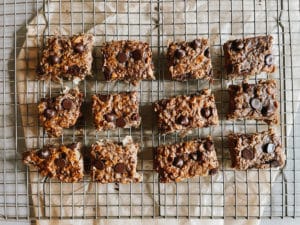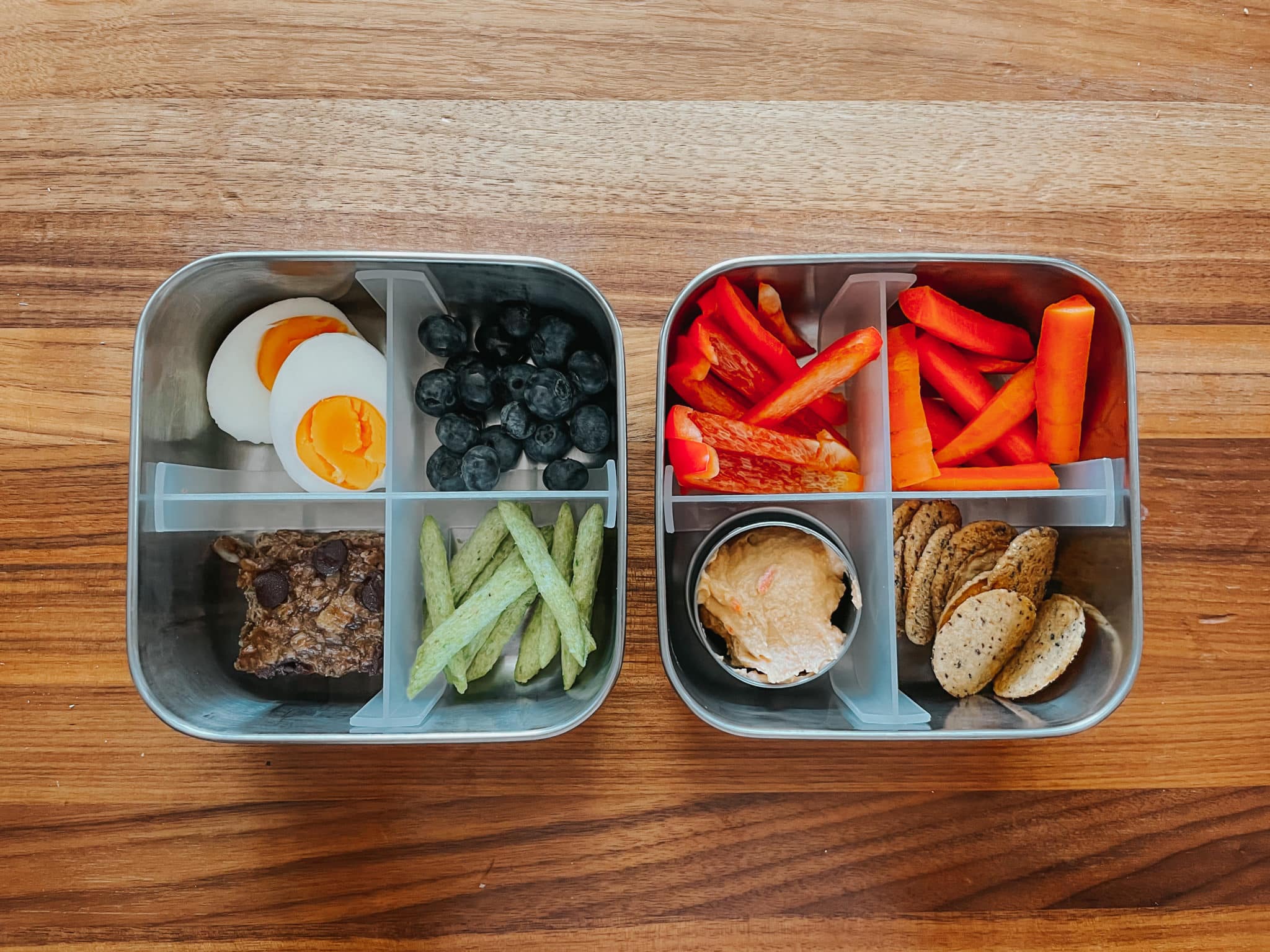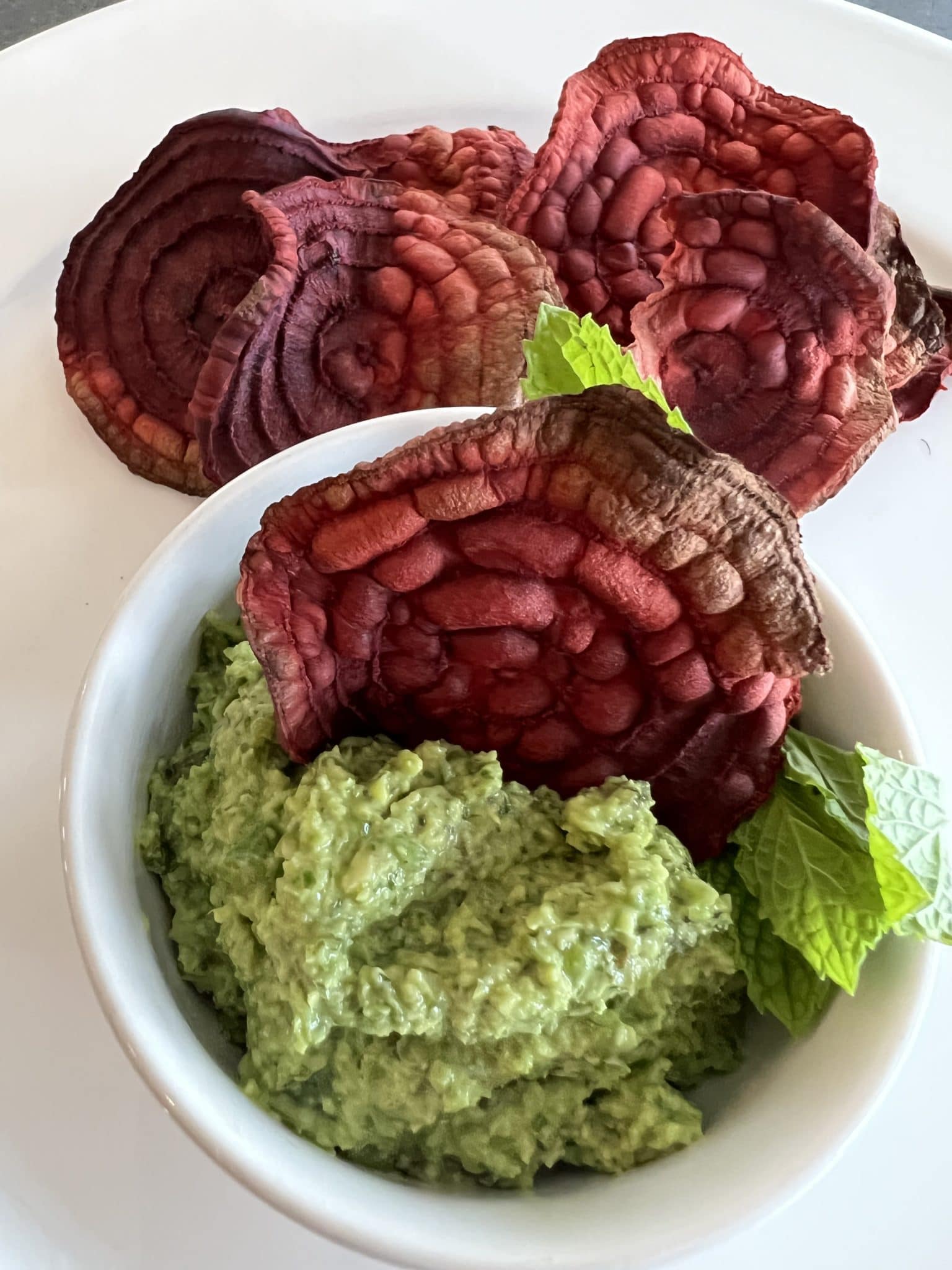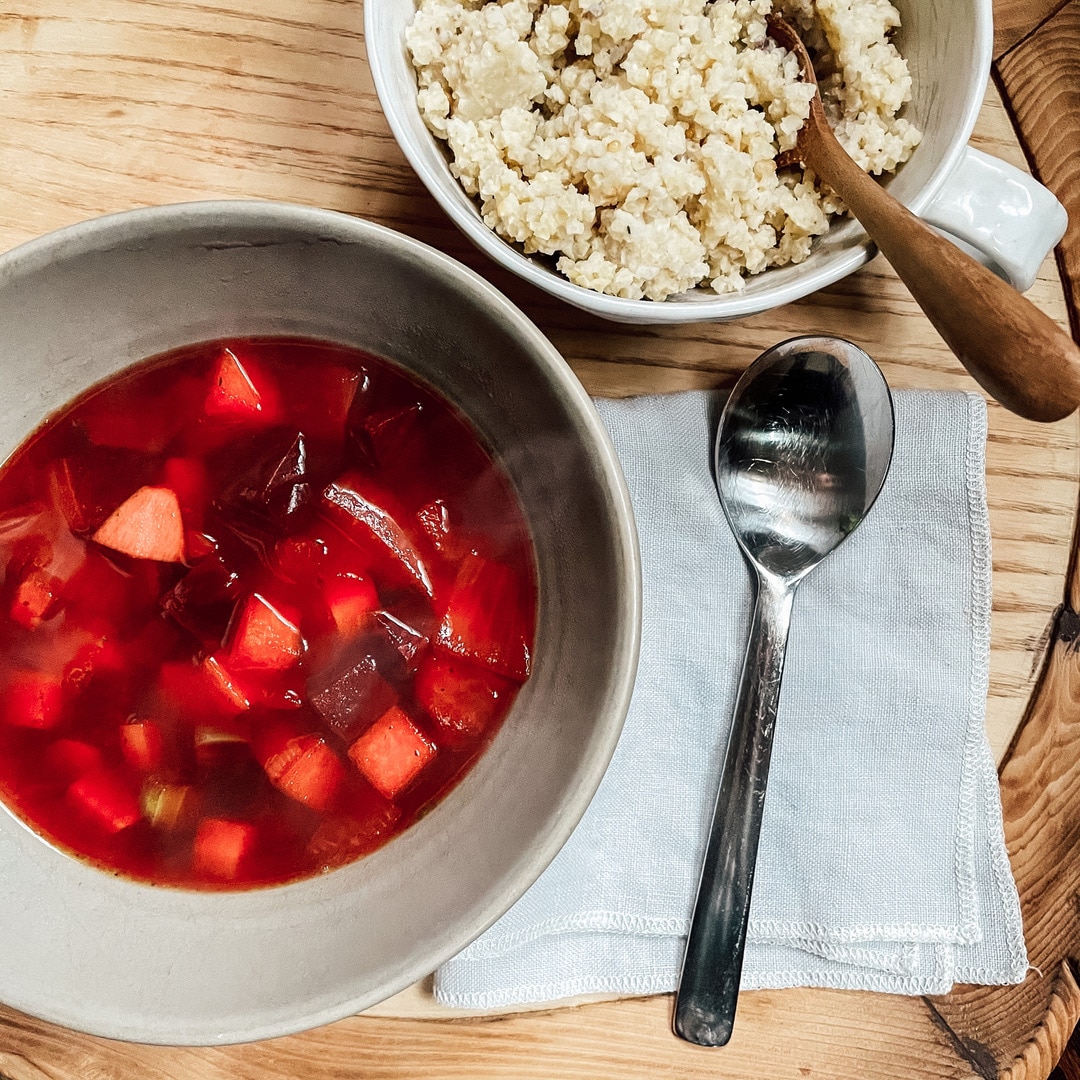Wholesome Snack Ideas
A new school year is almost upon us, which means the routine of planning healthy snacks and lunches is likely at the forefront of the minds of many parents! Beginning with our youngest students in our early childhood classrooms, an emphasis on wholesome and nutritious snacks and meals is a part of our culture. In kindergarten, each day we share a family-style meal with the children helping to prepare the food, set the table, and wash up afterwards. We practice gratitude, intention of preparation, and come to understand the source of our food. Nutritious real food that contributes to our children’s well-being and development is essential.
Once the mid-morning snack transitions to being packed from home rather than prepared at school, we know it can feel like a chore to come up with a variety of nourishing snacks. So, we thought we would share some tasty yet wholesome snack ideas with the help of Carla Abate, a DWS parent and community member as well as a certified master nutrition therapist. Below are some simple whole food ideas:
· Hard-boiled eggs
· Apple slices with nut butter (or sunbutter as nut-free alternative)
· Veggie slices (red pepper, carrot, cucumber or celery) and whole grain crackers with hummus
· Nuts/seeds and dried fruit
· Dried fruit chips or veggie chips
· Cottage cheese with diced apples and sprinkled cinnamon and nutmeg
· Whole-milk plain yogurt topped with granola and fruit
· Oatmeal topped with granola and fruit
The shared snacks in our kindergartens are an integral part of our daily and weekly rhythms. It is another element that brings consistency and predictability to the children, helping to foster a sense of comfort and security in their world around them. The children often know the days of the week by the snack, asking “is it soup day?!” instead of asking “is it Wednesday?!” Similarly, to help children and parents alike, an established snack rotation from home could eliminate the early morning scramble of what to pack, knowing that "Oatmeal Monday" is ahead!
And just for fun, Carla has shared a bonus recipe below, which would definitely make a favorite snack item!
Homemade Banana Almond Butter Granola Bars:
- 2 ripe bananas
- ½ cup creamy or crunchy almond butter (or sunbutter as a nut-free alternative)
- 1 ¼ cups organic whole rolled oats (steel cut work too)
- ¼ cup mini chocolate chips
- ¼ cup coconut flakes-optional
- ½ tsp cinnamon
- ½ tsp vanilla extract
Directions:
- Preheat oven to 350 degrees F
- Mash the banana in a bowl and add all of the other ingredients except the chocolate chips. Mix well. Fold in the chocolate chips and coconut flakes. Press into silicone granola bar mold or press onto parchment in loaf pan. Bake for 25 minutes. Cool and cut if using loaf pan.

About Carla Abate
Carla Abate is a family wellness educator and advocate for the importance of nutrition during the perinatal stages. She is a certified master nutrition therapist (MNT) and postpartum doula. Her experience with pregnancy and entry into motherhood helped inspire what she does today. With motherhood came self-growth, inspiration, and courage. It also brought great challenge forcing her to dive deep into her own wellness journey. Today, it’s Carla‘s mission to help other mothers (and their families) flourish throughout pregnancy and well beyond.
Find out more at rebelrootsnutrition.com or on instagram @rebelrootsnutrition or contact Carla directly at carla@rebelrootsnutrition.com
Green Pea and Mint Pesto Recipe
With the abundance of fresh mint growing in our gardens this time of year, we thought we would share a recipe that our high school students made in nutrition class. It highlights the antioxidant and antimicrobial-rich polyphenols of common herbs such as mint, and was well loved by all! Enjoy.
Ingredients:
- 1 cup fresh English peas
- 1/2 cup packed fresh mint
- 1/2 cup fresh packed sprouts/microgreens
- 1-2 cloves garlic
- 1/2 lemon juiced
- 1/2 cup or more olive oil
- salt to taste
Directions:
- In a food processor, finely chop the peas, mint, garlic, and sprouts.
- Add the salt, lemon juice, and olive oil and blend till smooth. Serve on crackers or vegetable chips
Many thanks to Carla Abate for sharing. Carla is a family wellness educator and advocate for the importance of nutrition during the perinatal stages. She is a certified master nutrition therapist (MNT) and postpartum doula. Her experience with pregnancy and entry into motherhood helped inspire what she does today. With motherhood came self-growth, inspiration, and courage. It also brought great challenge forcing her to dive deep into her own wellness journey. Today, it’s Carla‘s mission to help other mothers (and their families) flourish throughout pregnancy and well beyond.
Find out more at rebelrootsnutrition.com or on instagram @rebelrootsnutrition or contact Carla directly at carla@rebelrootsnutrition.com
Achieving Deeper Sleep
As we greet each day ready to engage with one another and learn about the world all around us, an essential element is always a good night's rest! We all probably could benefit from more sleep than we currently receive, or at least more quality hours of sleep. After all, poor sleep is routinely linked to chronic disease. Children require even greater amounts of sleep than their adult counterparts, and for good reason. It is during sleep that growth and repair of the body takes place, and human growth hormone is at its peak. And when we really dig into the anatomy and physiology of sleep, we discover the important role of the natural light and dark cycles. In our Waldorf education, we do our best to lean into the rhythms of nature- and one simple way is prioritizing outdoor exposure during the school day. We are grateful to have Carla Abate, a DWS parent and community member as well as a certified master nutrition therapist, share more below on how this simple element of the Waldorf curriculum may be cultivating healthier kids and how we can all prioritize achieving deeper sleep.
Sleep 101
Phases of Sleep
Sleep takes place in phases, that are not exactly linear. The first, called sleep onset latency, is the period it takes us to go from awake to unconscious, and is normally between 10 and 20 minutes. Next, Non-Rapid Eye Movement (NREM) and Rapid Eye Movement (REM) set in, with rotating, and repeating 90-minute cycles. NREM cycles are longer in the beginning, and slowly become shorter, while REM cycles grow in length of time from the start of sleep until we wake.
Circadian Rhythm
The suprachiasmatic nucleus, a bundle of nerves located within the hypothalamus, is the primary site of our circadian clock. This nucleus is responsible for the regulation of many biological rhythms including wakefulness and sleep, digestion, and body temperature regulation. Located in close proximity to the optic nerve, the suprachiasmatic nucleus receives input from cells of the retina in response to exposure to light and darkness. This in turn activates corresponding hormones.
Hormones
Cortisol
- Our alert/wakeful hormone that is stimulated by light, particularly blue light waves, signaling time to rise and be productive
- Essential to acute stress response-cortisol is released as our body’s normal reaction to stress as part of the fight-or flight
- Anti-inflammatory-manages inflammation caused by physiological stressors
- When chronically activated by chronic stress or poor diet can lead to cortisol resistance and chronic inflammation
Melatonin
- Activated by onset of darkness and continues to be produced throughout the night
- Should be low in the morning and throughout the day
- Is a potent antioxidant especially locally within the brain
- Repressed by artificial light especially toward evening
Human Growth Hormone
- Most active while we sleep
- Responsible for repair and growth of tissues-very active in rapidly growing children
- Builds muscle mass boosting metabolism
Nutrition For Sleep
Protein - provides the essential amino acid tryptophan needed to make both serotonin and melatonin; also provides the amino acid glycine which acts as a neurotransmitter with an inhibitory effect aiding sleep. Nutrient-dense protein options include:
- Nut and seed butters
- Cottage cheese and yogurt-plain, full-fat and organic preferred
- Quality animal proteins-hamburger, rotisserie chicken, nitrate-free lunch meats, low-mercury fish, eggs, collagen powder- Collagen powders can be added as needed to smoothies, oatmeal, soups, etc.
- Legumes-add beans to a quesadilla or use hummus as dips for veggies
Carbohydrates - Late night eating, especially refined carbs, elevate blood sugar too close to sleep, causing a blood sugar crash during sleep that can be disruptive to quality sleep. Aim to stop eating 2 hours before bed or at least limit refined carbs sticking to fresh fruit as an after-dinner treat.
B Vitamins - B6, B12, and Folate especially, are essential to a methylation pathway of which melatonin production is dependent
- Leafy Greens
- Eggs
- Salmon
- Legumes
Vitamin D - Involved in melatonin synthesis. Vitamin D is best absorbed from sun exposure approximately 10-30 minutes a day midday without sunscreen
- Fish
- Egg yolks
- Fortified foods
Magnesium - involved in more than 300 biochemical reactions, this mineral regulates many other important chemicals involved in sleep including melatonin and GABA (a calming neurotransmitter)
- Dark chocolate - unsweetened preferably
- Avocados
- Nuts and seeds
- Leafy greens
Iron - acts as a cofactor to melatonin-essential to melatonin synthesis
- Dark chocolate
- Red meat (in moderation)
- Red kidney beans
- Vitamin C rich foods taken with iron rich foods increase iron absorption
How Much Sleep Do We Need?
- Infants 14-17 hours per day
- Toddlers 11-14 hours a day
- Preschool Age Children 10-13 hours
- School-Age 9-12
- Teens approximately 8-10 hours
- Adults 7+
Sleep Hygiene
There are many lifestyle adjustments that we can make to improve our sleep quantity and quality. Some are more challenging than others, but even the smallest changes can have a very positive impact when applied over time. Below are some considerations:
- Spend more time outside without sunglasses - natural light exposure during the day contributes to melatonin production in the evening to properly prepare us for sleep.
- Minimize or eliminate screens 2 hours prior to sleep - blue light exposure beyond the daylight hours interferes with melatonin release. Blue light blocking glasses can effectively minimize this type of light exposure when screens are unavoidable prior to sleep.
- Aim for complete darkness - we have melatonin receptors throughout the body so light does not only affect receptors in the eyes.
- Turn down the thermostat before sleep - keeping it a little cold at night decreases core body temperature which triggers sleep onset.
- Commit to going to bed before 10pm (8pm or earlier for children) - majority of deep sleep is achieved in first few hours
- Commit to eating meals at regularly scheduled times as much as possible - other rhythms affecting metabolism such as exercise and meal-times influence our circadian rhythm too.
- Stay active - exercise contributes to sleep drive (the body’s natural desire to rest) and helps regulate our core body temperature.
Recap
As we can see, sleep is a very complex process involving both the nervous and endocrine systems. However, many of the lifestyle and dietary adjustments we can make are not that complicated. Most of the nutrients that support sleep play a role in melatonin production and none work in a vacuum; each influencing one another and often derived from the same nourishing foods. Likewise, the habits we form around light exposure can benefit or burden this critical period of rest.
Disordered sleep conditions are on the rise and are likely due, in part, to the synthetic forms of light generated by the relatively recent technological revolution. Plenty of research links poor sleep with negative health outcomes, chronic disease, and mood disorders. If you or your child suffer from disrupted sleep, you may want to consider the help of a professional in order to preserve your long-term health. At the very least, prioritize getting outside in nature. Growing research positively links outdoor exposure not only with sleep, but other health conditions such as gut health as it relates to the microbiome. Don’t underestimate the small changes within your reach!
About Carla Abate
Carla Abate is a family wellness educator and advocate for the importance of nutrition during the perinatal stages. She is a certified master nutrition therapist (MNT) and postpartum doula. Her experience with pregnancy and entry into motherhood helped inspire what she does today. With motherhood came self-growth, inspiration, and courage. It also brought great challenge forcing her to dive deep into her own wellness journey. Today, it’s Carla's mission to help other mothers (and their families) flourish throughout pregnancy and well beyond.
Find out more at rebelrootsnutrition.com or on instagram @rebelrootsnutrition or contact Carla directly at carla@rebelrootsnutrition.com
References
https://www.ncbi.nlm.nih.gov/pmc/articles/PMC3703169/
https://www.ncbi.nlm.nih.gov/pmc/articles/PMC6751071/
https://www.ncbi.nlm.nih.gov/pmc/articles/PMC5703049
https://www.ncbi.nlm.nih.gov/pmc/articles/PMC6332482/
https://www.cdc.gov/sleep/about_sleep/how_much_sleep.html
Immune Support for Greater School Attendance
Beginning with our youngest students in our early childhood classrooms, an emphasis on wholesome and nutritious snacks and meals are a part of our culture. In kindergarten, each day we share a family-style meal with the children helping to prepare the food (like our much loved vegetable soup recipe here), set the table, and wash up afterwards. We practice gratitude, intention of preparation, and come to understand the source of our food. Nutritious real food that contributes to our children's well-being and development is essential. We are grateful to have Carla Abate, a DWS parent and community member as well as a certified master nutrition therapist, share her wisdom below once again for our community - this time, on immune support as we head into the winter season!
Immune Support for Greater School Attendance
COVID has prompted many of us to take a deeper look at our daily habits, particularly those involving nutrition that do, or do not, support robust immune function. When we keep immune health in mind, our kids miss less days of school and do not get behind on their schoolwork. This is true for parents too! Less sick days for our kids, often translates to less days off of work for us as parents. Whole foods have been designed by nature to provide us with what we need to get through times of illness. Vitamin C for example, is a potent antioxidant that increases the production of white blood cells and antibodies to fight infection. While vitamin A facilitates the formation of the oral, respiratory, and gastrointestinal mucosal linings that are our first defense against pathogens. Let’s take a closer look at some of these immune warriors.
Antioxidants
Antioxidants help fight off inflammation caused by bacteria or viruses. These are what give plant foods their color and flavor. Often referred to as polyphenols, phytonutrients, or flavonoids, these components of fruits and vegetables are capable of deactivating free radicals that cause inflammation. Foods rich in vitamins A, C, E, and the minerals zinc and selenium are some of the more common antioxidants. To obtain these, integrate the following foods:
- Vitamin A - egg yolks, dairy, oily fish
- Carotenoids (precursor to vitamin A) - carrots, cantaloupe, tomato and sweet potato
- Vitamin C - bell peppers, citrus fruit, broccoli and strawberries
- Vitamin E - sunflower seeds, almonds, pumpkin and leafy greens
- Selenium - various animal sources (poultry, dairy, fish and eggs), oatmeal, brown rice, spinach and sunflower deeds
- Zinc - red meat, shellfish, legumes, cashews and sesame seeds
Probiotics
Probiotics are the beneficial bacteria that we host in our guts and other areas of the body that set the stage for a healthy microbiome by keeping unwelcome microbes in check. These microscopic allies perform many tasks that we take for granted such as:
- Extracting nutrients from the food we eat
- Synthesizing certain nutrients such as vitamin K
- Producing short chain fatty acids (SCFAs), essential to colon health
- Training and communicating with the immune system
While more research is needed to explain the mechanisms involved in many of these operations, it is well-established that gut bacteria play a major role in immune function. This relationship begins at birth and indicates that both the microbiome and immune system evolved together.
Prebiotics
Prebiotics are what feed the healthy bacteria and promote their proliferation. These include fermentable fibers, resistant starches, and complex carbohydrates known as oligosaccharides, all of which can be found in many common plant sources with which we are familiar. Similarly, bacteria generally considered pathogenic also have fuel preferences, tending to favor refined sugars and starches. This illustrates the very relevant role that food plays in shaping the gut ecology and thus its impact on immune function.
Vitamin D
Vitamin D is actually a hormone. In addition to its well-established role in bone and calcium regulation, it is also a significant modulator of the immune response, with vitamin D receptors present on many types of immune cells. It acts as such, by inhibiting certain immune cells and the subsequent production of inflammatory chemicals (cytokines), promoting instead the production of anti-inflammatory chemicals essential to immune tolerance.
This hormone is best produced from the interaction between the UVB rays of the sun and the cholesterol under the skin. However, the skin should be exposed without sunscreen for at least 15-30 minutes a few times per week. And since absorption varies depending on other factors, such as how much skin is exposed, and proximity to the equator, it may be best to include foods naturally rich in vitamin D (or fortified for vegetarians/vegans).
Key immune-boosting nutrients to include daily:
- Vitamin D - oily fish and egg yolks are a couple of the only foods that make vitamin D naturally
- Zinc-animal - based foods like beef, eggs, and dairy; nuts and seeds, especially sunflower and pumpkin seeds
- Vitamin C - bell peppers, citrus fruits, and broccoli
- Probiotics - probiotic foods include fermented foods such as yogurt, sauerkraut, sourdough bread and miso
- Prebiotics - prebiotic foods include avocado, chia, asparagus, root veggies, cocoa and onion
- Vitamin A - dark green and deep orange veggies are high in beta-carotene a precursor to active vitamin A- for optimal absorption lightly cook with fat as vitamin A is a fat-soluble vitamin; animal-based sources provide active vitamin A (eggs, fortified dairy, and liver)
Keeping it simple……
Routinely eating a variety of whole foods is the best approach to obtaining the above immune-boosting nutrients. This promotes diversity of the microbiome which is associated with lowered disease risk!
About Carla Abate
Carla Abate is a family wellness educator and advocate for the importance of nutrition during the perinatal stages. She is a certified master nutrition therapist (MNT) and postpartum doula. Her experience with pregnancy and entry into motherhood helped inspire what she does today. With motherhood came self-growth, inspiration, and courage. It also brought great challenge forcing her to dive deep into her own wellness journey. Today, it’s Carla's mission to help other mothers (and their families) flourish throughout pregnancy and well beyond.
Find out more at rebelrootsnutrition.com or on instagram @rebelrootsnutrition or contact Carla directly at carla@rebelrootsnutrition.com
References
https://www.ncbi.nlm.nih.gov/pmc/articles/PMC3166406/
https://www.frontiersin.org/articles/10.3389/fimmu.2018.01830/full
https://www.ncbi.nlm.nih.gov/pmc/articles/PMC6162863/
https://www.ncbi.nlm.nih.gov/pmc/articles/PMC4815357/
Nutrition for Academic Success
Beginning with our youngest students in our early childhood classrooms, an emphasis on wholesome and nutritious snacks and meals are a part of our culture. In kindergarten, each day we share a family-style meal with the children helping to prepare the food, set the table, and wash up afterwards. We practice gratitude, intention of preparation, and come to understand the source of our food. Nutritious real food that contributes to our children's well-being and development is essential. We are grateful to have Carla Abate, a DWS parent and community member as well as a certified master nutrition therapist, share her wisdom below for our community on nutrition for academic success.
Nutrition for Academic Success
It’s a constant challenge to prepare lunches for the week and do so with a nutritional mindset. After all, it’s disappointing when lunch boxes return full of quality wasted food. But our children’s learning depends, in part, on the food they eat during the school day. As a parent myself, I too have struggled to keep the dream alive to feed my family well, all while sticking to a budget and time limit, and offering options that my kids will actually eat. It can feel like an exhausting, fruitless effort, but as a nutrition therapist, I am devoted to meeting this challenge and sharing my process with other parents. One of the first steps toward fueling our children wisely, is to understand the role of carbohydrates.
Carbohydrates seem to get a bad reputation these days. However, certain cells like our red blood cells cannot utilize any other energy source. And while low-carb diets such as the ketogenic diet, may have their place therapeutically, in the short-term, growing children need a balance of all of the macronutrients for proper development. Besides, all carbohydrates are not created equally. Rather than focus on eliminating these, we should be examining the quality of the carbohydrates we select.
Blood Sugar Regulation
Certain foods and food combinations have a greater ability to raise blood sugar than others. While fat and protein do not raise blood sugar as much as carbohydrates do, even different types of carbohydrates have varying effects. The more processed and refined carbohydrates are (think white bread, crackers, cookies and sugary drinks), the faster blood sugar rises, spiking insulin (the hormone that admits sugar into cells for energy), and resulting in excess sugar that will be stored as fat. This is one of the leading mechanisms responsible for the rise in childhood obesity.
When we continually allow blood sugar to soar and crash, we disrupt other hormones such as our stress hormone cortisol. The dramatic blood sugar crash that often follows a high carbohydrate meal, signals the stress response, and corresponding release of cortisol. The chronic stimulation of insulin and cortisol can eventually lead to resistance to these hormones further disrupting other metabolic processes.
While insulin and cortisol resistance are extreme, and often unobservable consequences of eating overly processed and refined carbohydrates, the following are some of the more obvious and relatable consequences likely more familiar to parents:
“Hangry” effect - low blood sugar resulting from simple carbohydrates can produce irritability and moodiness.
Poor concentration - fat and protein are satiating macronutrients that promote the feeling of fullness. When these do not accompany carbohydrates, hunger persists making it difficult to focus on other tasks. Apple slices with nut butter are a great solution.
Constant hunger - when we aren’t eating nutrient-dense foods, our bodies are also not getting the signal that they are nourished and overeating ensues. Nutrient-dense foods provide the right nutrients that communicate with our cells.
Other - Headaches, fatigue, and general lack of well-being. Many other common symptoms can be linked back to poor blood sugar regulation.
Diet and lifestyle recommendations
- Replace simple carbs with fiber-rich complex carbs such as whole grains, vegetables, and some fruits-fiber slows sugar absorption.
- Pair carbs with fat and protein at each meal to slow the blood sugar surge. Avocado, coconut, grass-fed butter, nuts and seeds are great sources of healthy fat.
- Focus on carbs in the form of fresh vegetables that include additional micronutrients such as vitamins, minerals, and polyphenols. Many vitamins such as the B vitamins play a role in energy metabolism.
- Support the microbiome with probiotic and prebiotic-rich foods - many pathogenic strains of bacteria feed on sugar and can be kept in check by introducing beneficial microbes present in fermented foods such as yogurt, miso, and sourdough bread.
- Get your kids moving - exercise is known to increase insulin sensitivity. Take family bike rides or get your kids involved in sports.
“Start where you are,” the title of one of my favorite books by Pema Chodron on compassion, always rings in my mind when I think about making dietary and lifestyle changes. Remember, my child may be starting with refined cereal, so a subtle shift to whole-grain cereal or maybe oatmeal would be a sensible carb upgrade. On the other hand, your child may already be enjoying whole grains, and is open to incorporating more carbs in the form of veggies (which also supports the microbiome - to be discussed in more detail in upcoming posts), in an omelet for instance.
Remember, carbohydrates in the form of whole foods provide the most nourishment. These typically contain an array of nutrients that interact with one another and function to address more than one biological process. For example, zinc is essential to the formation of active vitamin A, and while it plays a major role in immune regulation, it also participates in insulin synthesis, release, and storage. Additionally, our fat-soluble vitamins (vitamins A, D, K and E) require fat for absorption further making the case to balance your macronutrients at every meal.
Take it slow…….you will get there!
About Carla Abate
Carla Abate is a family wellness educator and advocate for the importance of nutrition during the perinatal stages. She is a certified master nutrition therapist (MNT) and postpartum doula. Her experience with pregnancy and entry into motherhood helped inspire what she does today. With motherhood came self-growth, inspiration, and courage. It also brought great challenge forcing her to dive deep into her own wellness journey. Today, it’s Carla's mission to help other mothers (and their families) flourish throughout pregnancy and well beyond.
Find out more at rebelrootsnutrition.com or on instagram @rebelrootsnutrition or contact Carla directly at carla@rebelrootsnutrition.com
References
https://www.mayoclinic.org/
https://www.ncbi.nlm.nih.gov/
https://www.ncbi.nlm.nih.gov/





